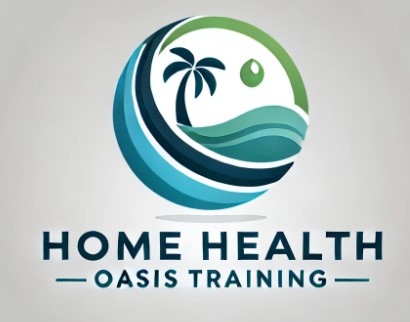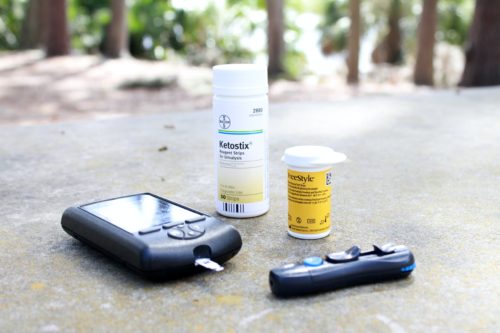Living with High Blood Pressure: Essential Tips for Home Health Patients
High blood pressure, or hypertension, is often referred to as the “silent killer” because it usually doesn’t present symptoms until significant damage has been done. It affects millions of people worldwide and can lead to serious health complications like heart disease, stroke, and kidney failure if not properly managed. For home health patients, living with high blood pressure can present unique challenges, but with the right approach, it’s possible to manage it effectively from the comfort of one’s home.
In this blog, we’ll explore essential tips for home health patients to manage high blood pressure, improve their overall health, and prevent long-term complications.
Understanding High Blood Pressure
Blood pressure is a measure of the force of blood against the walls of the arteries. It’s made up of two readings:
- Systolic pressure: The force of blood when the heart beats.
- Diastolic pressure: The force of blood when the heart is at rest between beats.
A normal blood pressure reading is typically around 120/80 mmHg. High blood pressure is diagnosed when the readings consistently measure 130/80 mmHg or higher. The condition is often asymptomatic, which means you might not know you have it unless you monitor your blood pressure regularly.
Challenges of Managing High Blood Pressure at Home
Living with high blood pressure at home can be tricky due to factors like:
- Lack of medical supervision: Without consistent visits to a healthcare provider, it can be easy to lose track of your health status.
- Limited access to immediate medical advice: Home health patients may not have the same quick access to professional advice compared to those in a clinical setting.
- Lifestyle factors: Unhealthy eating habits, lack of exercise, and stress are all common factors that can contribute to high blood pressure.
Despite these challenges, managing hypertension at home is entirely possible with a proactive approach. Here are some tips and strategies to help you stay on track.
1. Monitor Your Blood Pressure Regularly
One of the most important steps in managing high blood pressure at home is regularly checking your blood pressure. You can purchase an at-home blood pressure monitor, which will help you keep track of your readings and understand how well your management strategies are working.
- How to use a home blood pressure monitor: To get accurate results, take your blood pressure at the same time each day (preferably in the morning before eating). Sit in a quiet place, relax for five minutes, and make sure your arm is supported at heart level.
- Keep a log: Recording your readings allows you to track changes and share this information with your healthcare provider. Many monitors come with apps that help track your readings and send reminders.
2. Follow a Healthy Diet
Diet plays a critical role in managing high blood pressure. A well-balanced, heart-healthy diet can lower blood pressure significantly. Here are some tips on what to eat and what to avoid:
-
The DASH Diet (Dietary Approaches to Stop Hypertension): This diet is specifically designed to lower high blood pressure. It emphasizes:
- Fruits and vegetables: Aim for at least 5 servings of vegetables and 4 servings of fruit daily.
- Whole grains: Choose whole grains like brown rice, oats, and whole wheat bread.
- Lean proteins: Opt for skinless poultry, fish, beans, and legumes.
- Low-fat dairy: Include low-fat or fat-free options to reduce saturated fat intake.
- Nuts, seeds, and legumes: These are rich in magnesium and potassium, which help control blood pressure.
-
Reduce sodium intake: Too much salt can raise blood pressure. Aim to consume no more than 1,500 mg of sodium per day. Avoid processed foods, which are often high in sodium, and cook fresh meals at home when possible.
-
Limit alcohol and caffeine: Excessive alcohol consumption and high caffeine intake can raise blood pressure. Stick to moderate alcohol consumption and be mindful of your caffeine intake.
-
Increase potassium: Potassium helps balance out the negative effects of sodium on blood pressure. Foods high in potassium include bananas, spinach, sweet potatoes, and beans.
3. Stay Physically Active
Exercise is one of the most effective ways to lower and maintain healthy blood pressure levels. Engaging in physical activity strengthens your heart, improves circulation, and helps keep your weight in check. For home health patients, here are a few tips for staying active:
- Aim for at least 150 minutes of moderate aerobic exercise per week. This can include activities like walking, swimming, cycling, or even dancing.
- Strength training: Include exercises to build muscle strength twice a week. This can be done with bodyweight exercises such as squats, lunges, and push-ups, or with resistance bands.
- Take short breaks: If you’re unable to do long exercise sessions, try taking short walks throughout the day. Even small amounts of movement add up and benefit your heart health.
Before starting any exercise program, consult with your healthcare provider to ensure that the exercises are safe for your specific health conditions.
4. Manage Stress Effectively
Chronic stress is a major contributor to high blood pressure. It triggers the release of stress hormones, which cause the blood vessels to constrict, leading to an increase in blood pressure. Here are some stress management strategies:
- Practice mindfulness: Techniques like deep breathing, meditation, and yoga can help calm the mind and reduce stress.
- Journaling: Writing down your thoughts and feelings can be a great way to release tension and keep your mind clear.
- Take breaks: Set aside time each day to relax and unwind, whether through reading, hobbies, or spending time in nature.
By incorporating stress-reducing activities into your daily routine, you can help lower your blood pressure and improve your quality of life.
5. Get Enough Sleep
Lack of sleep or poor-quality sleep can negatively affect blood pressure. During deep sleep, the heart rate and blood pressure naturally lower, giving your body time to rest and recover. If you’re not getting enough sleep, it can lead to higher blood pressure.
- Aim for 7–9 hours of sleep per night.
- Create a calming bedtime routine: Wind down before bed by avoiding screens, engaging in a relaxing activity like reading or listening to soothing music, and ensuring your bedroom is dark and quiet.
- Maintain a consistent sleep schedule: Go to bed and wake up at the same time every day, even on weekends, to help regulate your body’s internal clock.
6. Take Your Medications as Prescribed
If your healthcare provider has prescribed medications for high blood pressure, it is crucial to take them exactly as directed. Skipping doses or stopping medication without consulting your doctor can lead to a rise in blood pressure and increase your risk of complications.
- Set reminders: Use a pill organizer or set alarms on your phone to remind you when to take your medication.
- Track side effects: Keep track of any side effects you experience and report them to your doctor.
- Regular check-ups: Even when managing high blood pressure at home, you should continue to have regular check-ups with your healthcare provider to assess the effectiveness of your treatment plan and make adjustments if necessary.
7. Quit Smoking
Smoking is a major risk factor for high blood pressure and cardiovascular disease. The chemicals in cigarettes damage blood vessels and can increase the risk of a heart attack or stroke. Quitting smoking is one of the best things you can do to improve your overall health.
- Seek support: Consider joining a smoking cessation program or working with your healthcare provider to create a plan to quit.
- Find alternatives: Use nicotine patches, gum, or other nicotine replacement therapies to help curb cravings while you work on breaking the habit.
8. Stay Connected with Your Healthcare Provider
Even though you’re managing your high blood pressure at home, staying connected with your healthcare provider is vital for long-term success. Regular virtual or in-person check-ups will ensure you’re on the right track and allow for adjustments in your treatment plan if necessary.
- Telemedicine: Many healthcare providers offer telemedicine services, allowing you to consult with them remotely, which can be more convenient for home health patients.
- Ask questions: Don’t hesitate to ask your healthcare provider questions about your condition, treatment options, and any concerns you may have. Being informed empowers you to make the best decisions for your health.
Conclusion
Living with high blood pressure is a daily challenge, but with the right strategies, it is possible to manage it effectively at home. Regular monitoring, a healthy diet, exercise, stress management, adequate sleep, medication adherence, and support from your healthcare provider are all crucial components of a successful blood pressure management plan.
By taking a proactive approach, home health patients can lead healthier, more fulfilling lives and reduce their risk of complications associated with hypertension. Stay committed to your health journey, and remember that small changes over time can make a significant difference in managing high blood pressure.
Editor's Pick
Leave A Comment
Related Posts
- Published On: June 2, 2024
Transition from OASIS-E to OASIS-E1: Key Changes and Implications for […]
- Published On: May 28, 2024
Importance of Clinical Narrative and Nurse Teachings while Documenting Home Health OASIS Assessments
Importance of Clinical Narrative and Nurse Teachings while Documenting Home […]
- Published On: April 29, 2025
Navigating the Complexities of Medicare and Medicaid Reimbursement for Home […]
- Published On: April 27, 2025
Engaging Your Team Around the IPR: Turning Data into Motivation […]
- Published On: April 27, 2025
Engaging Your Team Around the IPR: Turning Data into Motivation […]

